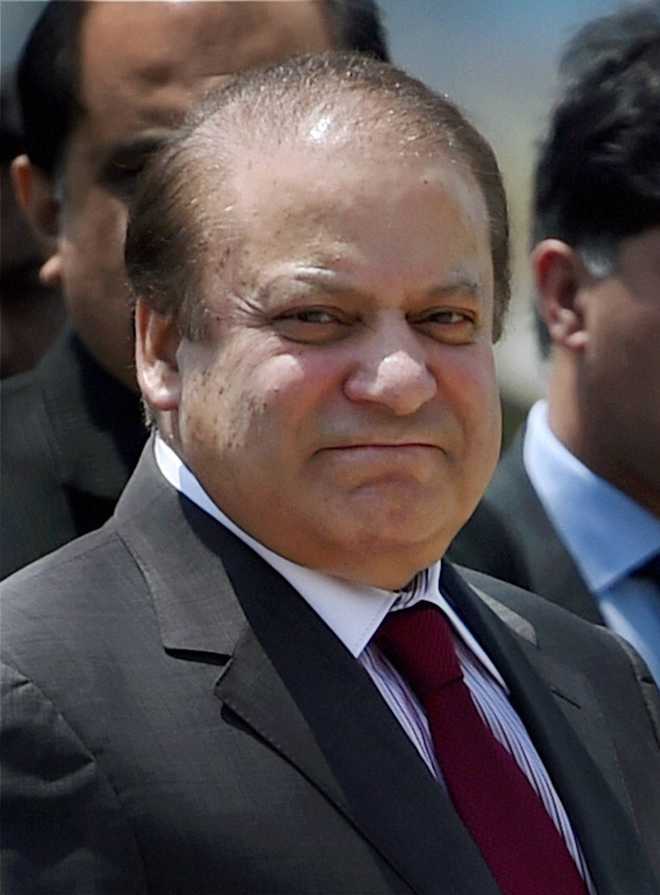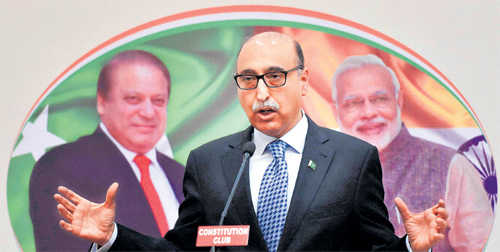References to Baluchistan,
Gilgit-Baltistan and Pakistan Occupied Kashmir (PoK) on Independence Day by the Prime Minister set the cat among the pigeons. It helps prove just how little the strategic community of India and the world had earlier focused on these contentious aspects, especially Baluchistan. It has created a strategic turbulence of sorts in Pakistan itself, has got exiled Baloch people in the US and elsewhere gingered up, and produced strategic analyses in reams. India fully aware of this Achilles heel of Pakistan has desisted from raising the issue to embarrass Pakistan despite all the intimidation the latter has done in and on Jammu & Kashmir (J&K).
Baluchistan is a complex issue with an emotive, political and strategic connection. It has rarely been discussed in India or elsewhere and knowledge on it is largely deficient. The PM’s remarks have got Pakistan so riled that it has booked a couple of Baloch leaders for having supported the Indian Prime Minister’s remarks. The former Afghanistan President Hamid Karzai has come out in support of human rights in Baluchistan. Bangladesh which has an awkward connect to the issue too has supported the call for greater human rights for the Baloch people. However, in India there has been divided opinion with the political opposition questioning the need for raising the issue when India does not even enjoy the benefit of a common boundary with Baluchistan. Others objected to the raising of the issue when India itself had an ongoing internal problem with the turbulence in Kashmir. The Baluchistan issue has also become important because of the China Pakistan Economic Corridor (CPEC) on which China is investing 46 bn USD. A major part of this corridor lies in Baluchistan as does the port of Gwadar which connects the corridor to the sea.
India has no claim over the territory of Baluchistan and does not contest Pakistan’s rights over it. So what is Baluchistan all about and how does it enter into the India-Pakistan equation? Without too much detail it is perhaps suffice to know that much like Hyderabad and Junagadh’s integration with India, Baluchistan also did not have a smooth integration with Pakistan in 1947. There have been a series of uprisings at intervals of few years. The Baloch people want greater autonomy, increased royalties from provincial revenue and natural resources which are in abundance in their region and, and an independent nation-state status. It is Pakistan’s largest state (40 percent of the land mass) but also it’s poorest, with a population of 13 million. The Baloch people exist in a region which is across three countries; Pakistan, Afghanistan and Iran. The alienation that exists among the people is almost akin to that which existed in East Pakistan, a result of ham handed domination of the Pakistan narrative by the West Punjabis. The one event in recent history which probably raised the Baloch sensitivity by many notches was the killing of their leader Nawab Akbar Bugti by the Pakistan Army on direct orders of Parvez Musharaf.
Pakistan’s geo-strategic importance to nations that matter dictates much of the discourse. It has been a frontline state for the US through much of its history and for China it remains a strategic asset. India’s relationship with Pakistan though thorny has also been about noninterference in its internal affairs. This was especially since the period of former Prime Minister Inder Gujral (1997-8) whose doctrine was all about a benign policy towards the neighbors. Thus, despite Pakistan’s active support for the Punjab terrorists through the Eighties and the switch to even more active interference amounting to proxy war in J&K since 1989, India considered two things as anathema. First was the issue of water; never did it consider using threats relating to Indus Waters Treaty 1960 even when it was subjected to heinous terrorist attacks such as 13/12 and 26/11. Second, it never mentioned a word about Baluchistan even though the potential for exploitation always existed. This strategy placed India on a high horse of morality which has assisted in it attaining much respect in the international community. It is this moral ascendancy which is being referred to by many analysts with the deduction that a carefully crafted international image may receive a hit due to Mr Modi’s sudden turnaround in mentioning the ‘B’ word.
There are other objections from the analyst community which perceives that Iran may be unhappy with India supporting the human rights cause in Baluchistan. Such support is many times taken as backing for separatism. Separatist tendencies of Pakistan’s Baloch province will have its spin off effects on Iran’s people of the same ethnicity. Then there is Kashmir; there is this thought that by raking up Baluchistan we in India were making ourselves vulnerable to international inquisitiveness about our human rights record too.
For many years and more emphatically now, Pakistan has been using every possible propaganda tool to color India black with accusations of our interference in its internal affairs. The home grown terror campaign by the Tehreek e Taliban Pakistan (TTP) and the high intensity contestation of the Pakistan security forces by smaller groups is once again placed at the door step of India in the blame game. So with the demonization of India at every stage it had become almost routine, a virtual force of habit to castigate it for imaginary intervention in Pakistan’s affairs. Mr Nawaz Sharif’s recent remarks immediately after the suicide attack on the Quetta lawyers and follow up on Pakistan’s Independence Day did not hold back anything.
So, if Mr Modi decides to mention Baluchistan and focus on the human rights situation there how should this be taken by his domestic constituency? The first thought; it is testing the waters, getting the feel by forcing the adversary to respond, bring irrationality in his utterances and just unnerve him and the entire security establishment. Very used to the customary transactional responses from India, this one which is slightly below the belt nevertheless gets a standing count. It riles the Pakistani psyche which for many years has got used to India’s defensive stance.
Those who perceive that with Kashmir unstable this wasn’t the time to play quid pro quo also say that our moral standing has taken a beating. They need to consider whether one should instigate when one’s house is stable or when the adversary is pressurizing you. You actually have to do it to force the adversary to pull back from his intent.
India’s routine response to Pakistan’s diatribes against it has been outright denial. It obtains no advantage. However, when a single word is spoken at the right time its effect is electric. Pakistan is already worried about India’s second coming in Afghanistan after Ashraf Ghani’s turnaround. The signing of the Trilateral Chahbahar Agreement opens another avenue for strengthening India Afghanistan relations. It is from that direction that Pakistan fears India’s interference since no physical boundary between Baluchistan and India exists. It is not helpful towards building future India Pakistan relations but the probable intent of Mr Modi was only to signal that two can play this game and that India in future would meet Pakistan’s attempts at interference in Kashmir.
In India’s security domain one of its weakest links is Information Warfare; the ability to play mind games, keeping the adversary on tenterhooks about the next move and taking the battle into the domain of smart warfare. Since for the umpteenth time Pakistan could raise the temperatures in Kashmir, after the recent killing of Burhan Wani, perhaps a little experiment is what the Modi mind is attempting. Remember Pakistan’s chaotic internal security situation and obsession with seeking its space in Afghanistan leaves it little time for Kashmir. Cornering it by imposing caution and giving enough signals about the future intent being in the same domain as that of Pakistan in Kashmir, could force a rethink. However, a one off smart move which has had strategic overtones needs sustenance for continuing effectiveness. We will have to wait and watch how Mr Modi takes this game forward.
(Adapted by the author from his article in Governance Now)
HT PHOTOThe Border Security Force is keeping a close eye on any movement from across the fence after the terrorist attack on an army base at Uri in Jammu and Kashmir.









































































